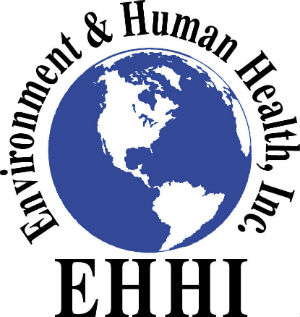Waste Tires in Children's Playgrounds
EHHI OpEd: Connecticut has 118 children's playgrounds surfaced with waste tires, and it's time to test them.
By Nancy Alderman, President, Environment and Human Health, Inc. We have just learned that the municipal government in Washington, D.C. has closed down three children's playgrounds with "poured-in-place" (PIP) rubber surfacing after high levels of lead were found. Poured-in-place rubber is a seamless rubber surface that is used in many playgrounds in Connecticut and across the nation. What is important about this story is that playgrounds that have been surfaced with "poured-in-place" waste tire rubber have not been tested for lead or any other chemicals before these surfaces were installed. Yet we know that waste tire rubber products contain 11 carcinogens and 20 irritants, as well as a number of heavy metals. How is it then, that this untested and unregulated material has been placed in so many of our smallest children's playgrounds? It was not until the District of Columbia decided to actually test these three playgrounds with poured-in-place surfacing that lead was found — and then, of course, they had to close the playgrounds down. No testing was done for the other chemicals that we know are in in waste tire rubber surfacing? What about the testing for lead and other chemicals that has not been done in all the other playgrounds across Connecticut and the country with waste tire rubber surfacing? Last year Environment and Human Health, Inc. (EHHI) visited health departments in many Connecticut towns to discuss the dangers of surfacing playgrounds with rubber mulch and poured-in-place rubber. EHHI also tracked how many playgrounds in Connecticut had either rubber mulch surfacing or poured-in-place rubber surfacing. EHHI found that although most playgrounds in Connecticut had removed their waste tire rubber mulch surfacing, the state still had 118 playgrounds surfaced with poured-in-place waste rubber tires. Breaking down the numbers — 86 of these playgrounds were in schools and 32 were in municipal playgrounds. Connecticut is a small state — so think how many must exist in other states? Poured-in-place rubber surfacing is not regulated nor is it uniform. It is made up of waste tires from all over the country and the world. Into rubber tire shredding machines go used car tires of every make, used truck tires and who knows what other waste tires — so uniformity of the product would be completely impossible. David Brown, Sc.D., EHHI's toxicologist said concerning poured-in-place rubber surfacing, "Children are exposed to the materials as they shed from the playground, from the edges, when rubber surface is in disrepair, or when holes or rips develop gradually or suddenly. These surfaces are never solid, and begin to dust and crumble, so it is never possible to claim that they are "well-maintained" or that the materials within are "contained." These surfaces undergo constant heat, rain, sun, jumping, running, and impact." This means that whatever chemicals and metals are in the rubber surface material will eventually become available to expose those children who play on it. Again, waste tire material, like that in poured-in-place surfaces, has been shown to contain 11 carcinogens and 20 irritants. Many of the irritants are lung irritants, and with so many of our children having asthma, it is not good to expose them to additional lung irritants. Environment and Human Health, Inc. (EHHI) has been warning about the dangers of waste tire rubber products for over 10 years. When will people start listening?
Published in the Hartford Courant, 2019
